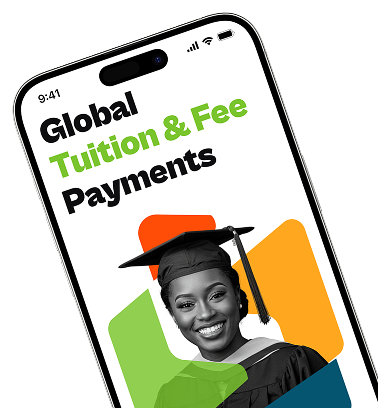In the race to make STEM (science, technology, engineering, mathematics) attractive to skilled professionals, the United States and China have different visa strategies. While the U.S. has offered the H-1B visa for years, China recently launched its K visa to make it competitive to international students and professionals.

Understanding the Two Visas
U.S. H-1B Visa
The U.S brings in foreign skilled professionals in the STEM field via the H-1B visa, a non-immigrant visa. Here are the key aspects of the H-1B visa:
- Educational Requirement: The foreign worker must have at least a bachelor's degree or its equivalent, or possess a license in a speciality occupation field.
- Sponsorship is Required: The H-1B visa is sponsored by a U.S. employer, who must file a petition with U.S. Citizenship and Immigration Services (USCIS) on behalf of the prospective employee.
- Speciality Occupation: The job must be in fields like IT, engineering, medicine, finance, and other professions.
- Annual Cap and Lottery: The U.S. has an annual numerical cap on the number of H-1B visas issued and when demand exceeds the supply, USCIS uses a lottery system to select petitions.
- Dual Intent: The H-1B visa offers a dual intent provision for visa holders who are legally seeking permanent residency in the U.S. while on the H-1B visa.
- Duration and Renewal: The initial H-1B visa is granted for up to three years and can be extended for a total of six years or more.
China K Visa
China introduced the K visa on October 1, 2025, to attract young foreign professionals in STEM. Here are the key aspects of China's K Visa:
- Streamlined Application: The K visa’s application process is expected to be more streamlined to make it easier for entry.
- Strategic Initiative: The K visa is intended to bolster the country’s innovation drive and attract talented young people.
- Target Audience: The target are for young professionals engaged in teaching or research in these fields and graduates with a bachelor's degree or higher in STEM fields from recognised universities or research institutions.
- No Employer Sponsorship: The K visa does not require a domestic employer or entity to issue an invitation, which makes the process easier.
- Flexibility and Scope of Activities: The visa holders enjoy greater flexibility in movement, longer validity, and duration of stay, including allowing engagement in academic exchanges, research, cultural activities, entrepreneurship, and business ventures.
Read: Study in India: A Guide for International Students
Difference between China K Visa vs. U.S. H-1B Visa
|
Feature |
China K visa |
US H1B visa |
|
Purpose |
To attract young foreign STEM professionals by providing a pathway to work and live in China without a sponsor. |
To allow U.S. employers to temporarily employ foreign workers in specialty occupations. |
|
Sponsor Required? |
No, it is a sponsor-free pathway. |
Yes, requires a sponsoring employer. |
|
Target Audience |
Young STEM professionals with a bachelor's degree or higher. |
Skilled workers in specialized fields. |
|
Cost |
Low-cost. |
Involves a $100,000 fee for some applications. |
|
Other Details |
It's not a simple work permit and is not considered immigration. |
Has an annual cap of 65,000 visas, with an additional 20,000 for those with a U.S. master's degree or higher. |
|
Application Process |
Intended to be streamlined and less bureaucratic. |
A complex process that involves filing a Labour Condition Application (LCA) with the Department of Labour, followed by a petition (Form I-129) to U.S. Citizenship and Immigration Services (USCIS). |
|
Annual Cap |
There is no stated annual cap. |
Subject to an annual numerical cap of 85,000 cap and a lottery system when demand exceeds the cap. |
|
Activities Allowed |
Academic exchange, research, entrepreneurship, business, cultural programs. |
Restricted to duties in the petition. Other employment or roles require new petitions or separate authorization.. |
Broader Implications & Considerations
The K visa is part of China’s strategy to stimulate innovation by attracting global STEM talent, especially amid intensifying competition with the U.S. for high-skilled workers. Because many of its details remain vague (stay duration, renewal, fees, quotas, family rights, path to permanent status), there is uncertainty around how effective or attractive it will be in practice.
The H-1B, despite being more rigid, benefits from clear rules, established processes, and the possibility of transitioning to permanent residence. Ultimately, the choice between the two depends on one’s priorities—flexibility, autonomy, long-term settlement, employer support, or innovation ecosystems.
Read: I-901 SEVIS Fee Frequently Asked Questions

H-1B Visa FAQs
- What is the H-1B visa?
The H-1B visa is a non-immigrant U.S. visa that allows employers to hire foreign professionals in specialty occupations requiring theoretical or technical expertise, usually with at least a bachelor’s degree or equivalent. - Who is eligible for an H-1B visa?
You must have a job offer from a U.S. employer for a specialty occupation, hold a relevant bachelor’s or higher degree, and meet all professional licensing requirements for that role. - What are examples of specialty occupations?
Common fields include information technology, engineering, mathematics, medicine, architecture, finance, and education. - How long is the H-1B visa valid?
The initial period is up to 3 years, extendable to a maximum of 6 years. Further extensions may be possible if a green card process has started. - Can H-1B visa holders apply for permanent residency (Green Card)?
Yes. The H-1B is a “dual intent” visa, meaning holders can apply for permanent residency while in the U.S.
- Does an individual apply for the H-1B visa directly?
No. The U.S. employer must file the H-1B petition (Form I-129) on your behalf. - What is a Labor Condition Application (LCA)?
Before filing the H-1B petition, the employer must obtain an approved LCA from the U.S. Department of Labor, which ensures fair wages and working conditions. - Can an H-1B worker change employers?
Yes. You can change employers if the new employer files an H-1B transfer petition. You can start working once USCIS receives the new petition. - Can the H-1B visa holder work part-time?
Yes, if the petition was filed for part-time employment or if multiple employers each file separate H-1B petitions. - Is remote work allowed under H-1B?
Yes, but the employer must update the LCA to reflect the remote work location and comply with Department of Labor requirements.
- What is the H-1B visa cap?
The annual cap is 65,000 visas, with an additional 20,000 reserved for applicants with U.S. master’s or higher degrees. - How does the H-1B lottery work?
Due to high demand, USCIS runs a random selection (lottery) among all valid registrations to determine who can file full petitions. - When does the H-1B application process start each year?
The registration period usually opens in March, with petitions filed from April 1 for employment starting on or after October 1 of that year. - What is the H-1B electronic registration system?
Employers must first register each worker online and pay a small fee before the lottery selection. - Can multiple employers submit H-1B registrations for the same person?
Yes, if each job offer is genuine and from separate, unrelated employers. Multiple registrations from the same employer are not allowed.
- Who pays the H-1B visa fees?
Employers are legally required to pay most of the filing fees, including the ACWIA and Fraud Prevention fees. Either party can pay optional premium processing. - What are the typical H-1B filing fees?
Depending on company size and options, the total can range from $1,700 to $6,500 or more. - What is premium processing?
An optional USCIS service (fee: $2,805 as of 2025) that guarantees processing of the petition within 15 calendar days.
- Can H-1B holders travel outside the U.S.?
Yes. You can travel abroad and re-enter the U.S. with a valid H-1B visa stamp and approval notice. - Can family members accompany H-1B visa holders?
Yes. Spouses and children under 21 can apply for H-4 visas to live in the U.S. - Can H-4 dependents work in the U.S.?
Spouses of H-1B holders with approved employment-based green card petitions (I-140) may be eligible for employment authorization. - Can H-1B holders study while working?
Yes. You can study part-time at accredited U.S. institutions without affecting your H-1B status.
- What happens if the H-1B petition is denied?
The applicant cannot work in the U.S. under that petition. The employer or applicant may appeal or reapply the next fiscal year. - Is there a grace period after job loss on H-1B?
Yes. H-1B holders have a 60-day grace period (or until the visa expiry date, whichever is shorter) to find new employment, change status, or leave the U.S. - Can H-1B holders work for startups or small companies?
Yes, but the employer must meet all compliance requirements, including showing the ability to pay the offered wage.
China K Visa FAQs
1. What is the China K visa?
The K visa is a new visa category introduced by China to attract young foreign talent in science, technology, engineering, and mathematics (STEM) fields
2. When does the K visa take effect?
It becomes effective on October 1, 2025.
3. Why is China introducing the K visa?
To make it easier to attract young STEM talent globally, reduce dependence on employer sponsorship, and increase flexibility in entry, residence, and engagement in research, innovation, and entrepreneurship.
4. How is the K visa different from China’s existing visas (e.g. R visa)?
· It does not require sponsorship or invitation from a Chinese employer or institution in its application.
· It offers more flexibility in permitted activities (e.g. exchange, research, entrepreneurship) rather than being strictly tied to a particular employment contract.
· It aims to simplify the application process and broaden entry frequency, validity, and stay durations.
5. Who is the target group for the K visa?
The visa is aimed at young foreign STEM talent.
6. What educational background is required?
Typically, a bachelor’s degree or higher from recognized universities (in China or abroad) in STEM fields.
7. Is prior work experience required?
Some requirements relevant to research, education, or technical work may apply, especially if one is not a recent graduate. But exact rules are to be clarified by consulates.
8. Is there an age limit?
Yes, the youth aspect implies an age boundary. Some sources report that the age bracket is 18 to 45 years old.
9. Can I apply without a Chinese employer or host institution?
Yes, the K visa is explicitly designed so that applicants do not need a Chinese employer or invitation letter.
10. What documents are needed for K visa application?
While final lists are pending, likely required documents include:
· Degree certificates / transcripts
· Proof of research or professional engagement, if applicable
· Valid passport with sufficient remaining validity
· Any other supporting credentials as required by the consulate or embassy (to be announced)
11. Do I need to apply from outside China (i.e. at a Chinese embassy or consulate)?
Yes, the initial visa application is likely submitted at a Chinese embassy or consulate abroad. However, if someone is already inside China under other valid visa status and meets the conditions, there may be options to convert or apply for K from within, depending on detailed rules.
12. Will the K visa have multiple entries and a longer duration?
Yes, one of the features is a more generous entry frequency, visa validity, and length of stay compared to ordinary visas.
13. What activities are allowed under K visa?
K visa holders may engage in education, scientific & technology exchange, research, entrepreneurial or business-related activities, cultural exchange, etc.
14. Can I get employed in China under K visa?
Yes, employment or research-type work in relevant STEM fields is permitted, provided one meets Chinese regulations and visa/permit rules. The visa is not strictly limited to “visiting” or “exchange” status.
15. Is the K visa “dual intent” (i.e. can I apply for permanent residence or work permit later)?
The announcement suggests that pathways may exist for high-end talent, or for those who meet the criteria for China’s permanent residency or high-level work categories.
16. How long can I stay in China per visit on a K visa?
Some sources indicate a maximum stay of up to 180 days per entry.
17. What is the overall validity period of the K visa?
In some proposals and reports, the visa might be valid for up to 5 years with multiple entries.
18. Can I change visa status within China (e.g. from K to work visa) without leaving China?
Possibly, if conditions and rules allow internal conversions or permit adjustments, but final procedures will depend on detailed regulations to be published by immigration authorities.
19. How do I apply for the K visa?
Use the China online visa application system (e.g., “New COVA” system) to apply, submit supporting materials, pay fees, and schedule a consular appointment.
20. How long will visa processing take?
The exact processing time is not yet publicly confirmed. Given standard visa practices, it may take several business days to a few weeks, depending on the consulate's workload and the complexity of the documents.
21. What will the visa fee be?
The fee schedule has not yet been made public. Since K is a new category, embassies will later publish the specific cost.
22. Can the visa be renewed or extended?
Yes, renewal or extension is expected to be allowed under conditions similar to those for other visas, though the details have not yet been published.
23. Do I need to present physical documents or just a digital submission?
Likely both — digital upload in the visa system plus original documents at consular interview, depending on embassy/consulate requirements.
How does the K visa compare with U.S. H-1B visa?
· K visa does not require employer sponsorship, unlike H-1B.
· K visa is more flexible in allowed activities and entry validity. H-1B has quotas and lottery; K visa is not known to have such caps.
What are potential risks or challenges?
· Some rules are still undefined (exact age limit, work permit linkage, visa fees)
· Possible competition for local jobs and public pushback in China.
· Consular interpretation may vary across Chinese embassies and consulates.
· Applicants must ensure their academic credentials and research/work records are verifiable.


